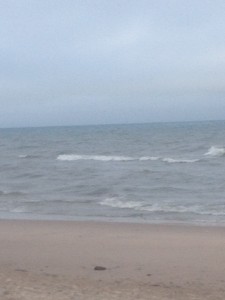 |
| Mishigami, the "great water" |
Early Saturday morning, before my first-ever presentation at Kalamazoo, Lowell Duckert and I went swimming in Lake Michigan. As I usually am, I was seeking meaning. Does it make sense to read frigid immersion as allegory, to say that my scant thirty hours at the Medieval Congress, perhaps five of which were spent sleeping, embody the same impulse as plunging into the cold waters of the Third Coast?
A maiden knight arrives
As an early modernist who’d never been there, I was curious about Kalamazoo. It shouldn’t have been all that exotic - the gap between the periods isn’t that wide, and anyway I’m close to the Sidney and Spenser Kzoo sub-cultures via my first book on romance. Plus the elemental hospitality of the BABEL/ITM/MEMSI/etc flowed through every hour. To paraphrase Jeffrey’s introductory remarks from “The Future We Want,” medievalists and early modernists are better served by seeing each other as alternate sympathies than rival claimants to a pre-modern throne. He sees a chasm between the sub-fields that needs to be bridged, and I’m also tempted to imagine a border across which sorties can sally and trade flourish, but in any case it seems more fun to be on both sides.
Even so, I felt vaguely alien upon arriving at the Congress. The sense that everyone else knew where they were going was part of it. Navigating the foreign WMU campus Friday afternoon to get to my first session seemed Spenserian and allegorical. (Should I say Dantesque instead? Romain de la Rose-like? Spenser is my go-to allegorical marker, but not the only one.) The ground was charged with meanings. The first living creature I encountered on campus was a goose. Symbol of fun? Or the need to extend our circle of attention beyond human actors? Of seasonal migrations? It was raining, and I hadn’t packed an umbrella or raincoat. The first human I recognized was Jeffrey Cohen, driving his rental car slowly down a campus drive. He rolled down his window, spoke my name, smiled, and drove off, leaving me in the rain. Meaning…what, exactly?
During a busy spring of many conferences, I’ve been thinking a lot about the relationship between individuality and community. The productive tension between the one and the many has been on my mind for a long time, and thinking back on my trip to Michigan, I have the sense that Kzoo might enable a slightly different response to this endless conundrum. Unlike the annual conferences I regularly go to – SAA, MLA, less often RSA – it’s always in the same place. To my fellow conference goers, many of whom happily rattled off their Kzoo numbers – 12 years straight! 13! 5! 20! – it clearly felt like home.
Like a first-time reader of an over-abundant text, Malory or Dante or Chaucer, I searched for ways into the overwhelming numbers & flavors & ideas on diplay. The goose started things off, and then it wasn’t long before I’d spotted a few grad school friends and eased into the familiar pattern of academic conferences: found the registration table, looped a badge around my neck, arbitrarily narrowed my list of four intriguing sessions down to one.
I ended up choosing what felt like the most Kalamazoo-ish panel, La Belle Compagnie’s “How Shall a Man be Armed?” a live demonstration and modeling of English armoring practices during the Hundred Years War. My BABEL-y and theoretical friends wondered if I was poking fun at medievalism by choosing that panel. And perhaps I was a little, as I retold the story at happy hour, but the truth is I love experiential learning and the pressure living bodies put on ancient structures. I really can’t get enough of that stuff – which is one reason I love teaching with live theater and also why I launched my maritime scholarship by learning to climb the rigging and set the sails on the tall ships at Mystic Seaport back in 2006. The Armor panel was wonderfully dense and awash in technical details, including the influence of Italian and French fashions on English armor designs. (I thought it was good evidence for the claim that modern men's fashions evolved out of armor.) The panel featured, in the four stalwart men gradually being dressed from foot to helm, a full helping of bodily presence, the force of “now” infiltrating historical expertise. Plus some good jokes, intentional or not: one knight’s beaver kept falling down and interrupting the presenter. It showcased the sometimes awkward fit of scholarly technical precision and fan-boy enjoyment. I could only get to one session as a audience member, but it was a good one.
Fellowship
As at NCS last summer, the communal virtue I wanted to think through at Kzoo was fellowship. I’d done my homework and read a little David Wallace, and I was interested in testing the rough assumption that, compared to my home waters at SAA, Kzoo was more fellowship-full, less hierarchical, more interdisciplinary, and extended across different kinds of intellectual space. That's a caricature of SAA, but an enabling fantasy about Kzoo.
In many ways, unsurprisingly, the two conferences are more alike than not. I was struck, though here I might be reading from my own private Kzoo, driven by BABEL, MEMSI, etc., by a deep attention to social organization and institutionalization beyond the panels. After seeing men armed, I went from BABEL happy hour -> MEMSI dinner -> BABEL party at Bell’s Brewery. I’ve seldom felt so well taken care of at a conference or so thoroughly awash with fellow-feeling. (At SAA I sometimes consciously shift between different sub-discourses, which I didn't at all at Kzoo, except I guess at the armor panel.)
My favorite moments at dinner were watching Jeffrey shift from insisting, as drinks were served, that it would be “impossible” to put together another set of MEMSI panels for next year’s Kzoo, because he was out of ideas, to watching him assemble, before dessert, a twenty-speaker mega-panel on “The Impossible.” (My word, supplied by Lowell, is “dry.” Impossible & undesirable, but something we covet and value. Though I now wonder if “memory” has already been taken?)
Bell’s is definitely a place to which I’d like to return. The logistics of the pre-panel swim the next morning trimmed the wind from my sails Fri night, but it’s an excellent spot.
The Cormorant and the Future
The panel I’d come to speak on, “The Future We Want,” dealt out six pairs and a wild card. The 10:00 am time was perfect for a pre-talk lake swim, a quick 60 miles west, before fiddling with flash drives and slideshows.
It was odd that none of the other panelists took up our offer to join us for a dip. Maybe they were waiting in a different hotel lobby at 6 am?
The talks rolled over us like so many cars in a freight train, roaring westbound, peering through fog, monkey at the wheel. I'll sprint through them in an early modernist spirit of competitive evaluation:
- The best presentation came first, Anne Harris and Karen Overby’s gorgeous meditation on optical lushness and the gifts of Art. I craned my neck backward to stare at the slides.
- Better than all the rest was Arayne Fradenburg and Eilleen Joy’s rich evocation of institutional freedoms and futures. No one was surprised when they admitted their talks had been ghost written by frozen kobolds held deep underground, where they spend their dark days digging for possibilities.
- My favorite was by Alan Mitchell and Will Stockton, who wasn’t really there. They brought the devil to the party and showed what happens when times and modes change.
- Lowell Duckert and I may not have had the prettiest pictures, but we were the only ones to sing during our presentation.
- None of the talks was better than Chris Piuma and Jonathan Hsy’s brilliant poetic meditation on containers and overflowing meanings.
- I could not believe it when Julian Yates and Julie Orlemanski actually came to blows over the dynamic meanings of The Battle of Maldon. There was no way to top that level of commitment, so it’s good that they anchored our relay.
Actually the best part may have been the introductions. Wild-card Jeffrey likened each of us to a different literary genre, then sat in the front row with eyes blazing. Greedy glutton of imagination, lapping it up after lashing us all to the mast!
I see now, but didn’t yet realize as I wrote the talk, that the “various” I was celebrating via Milton’s fallen angel-bird was the difference I’d come to Michigan seeking, the fellowship poured into glasses and spread across lush lawns, the screech of newness in my ears. As usual with acts of discovery, what you find is mostly what you bring. But what I like about new conferences is the slight reshuffling of times and voices, the partially off-balance feeling created by available novelty, and the opening up of new ways.
In maritime historical circles, the idea of the Great Lakes as the Third Coast aims to supplement familiar narratives of "Atlantic history" and Pacific globalization with a different American story, one that enters slightly askew, via the St. Lawrence diagonally from the northeast. This narrative connects the landlocked center of the continent to a distinctively northern maritime economy, trading furs and timber rather than cotton or sugar. This coast even -- quelle horreur! -- speaks more French than English, or at least it used to. Adding these fresh-water coastlines to our maritime narratives provides new trajectories for waterborne thinking.
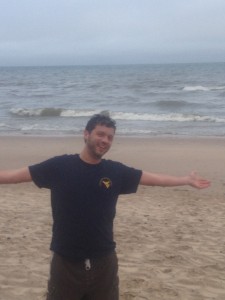
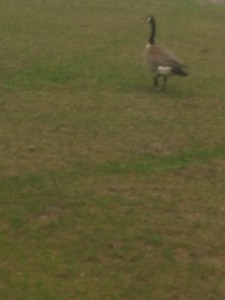
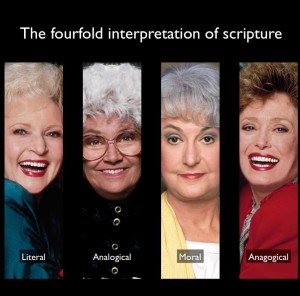
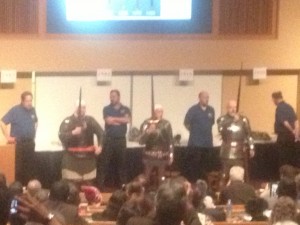
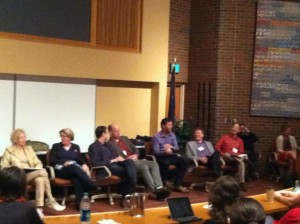
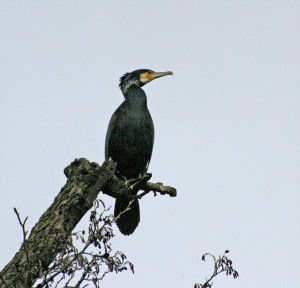
2 comments:
Thanks for this humane and full account Steve.
It was important to me to have four early modernists included in the panel for the same reason that I'm going to my 2nd SAA next year: what is really a long transition (in which some things change, some do not) too often gets instantiated as a divide or chasm, leading to those on either side conducting similar work but not necessarily in conversation. The future I want is more collaboration.
You are right, too, to identify Kzoo as a series of mini conferences. It's large enough where those who attend to follow certain threads that give a unified experience -- but most of us try as well to do what you did and attend a panel outside of these threads and see what happens. I've never chosen armor as my swerve, but feel inspired to do so now!
It was a pleasure having you at Kzoo and I hope you'll come again.
Thanks, Jeffrey! I like more collaboration in my future too & I agree that people are doing comparable work that benefits from engaging with each other. There're some real differences, too, between Kzoo and SAA that make it worth getting to both, if perhaps not every year. I'm sure I'll return to those cold northern waters.
Post a Comment